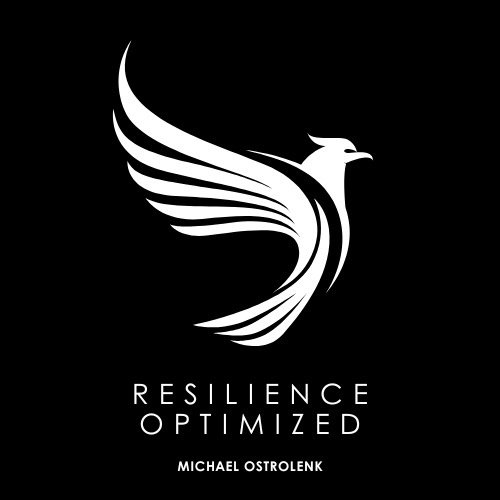Resilience Optimized
Responsible Disclosure Statement
Resilience Optimized: The Path to Responsible Disclosure
In today’s intricate digital landscape, the phrase “responsible disclosure” has emerged as an essential principle in the realms of cybersecurity and software development. It refers to the process where security researchers and ethical hackers report vulnerabilities in software or systems in a manner that facilitates timely fixes without compromising user safety. This practice contributes significantly to the overall resilience of software systems against malicious attacks. However, the synergy between resilience optimization and responsible disclosure is not only about finding vulnerabilities; it is also about enhancing the security posture of organizations and fostering a culture of collaboration amongst stakeholders.
Understanding Resilience in Cybersecurity
Resilience in cybersecurity refers to an organization’s ability to prepare for, respond to, and recover from cyber threats effectively. As organizations increasingly depend on technology and digital infrastructure, understanding the nuances of resilience becomes paramount. It emphasizes not just the prevention of incidents through robust security measures but also the capability to sustain operations during adverse situations and recover quickly post-incident.
Cyber resilience combines traditional security practices with incident response, business continuity, and disaster recovery. It entails adopting a proactive stance in which organizations regularly assess vulnerabilities, conduct threat modeling, and implement compensating controls to mitigate identified risks. This comprehensive approach is what makes resilience optimized—a state where organizations are not only secure but also agile enough to adapt and respond to emerging threats.
The Role of Responsible Disclosure
Responsible disclosure plays a critical role in enhancing cyber resilience. When vulnerabilities are discovered, responsible disclosure practices ensure that they are reported to the affected organization in a structured and ethical manner. This process typically involves the following key steps:
- Finding a Vulnerability: Security researchers utilize various methodologies to discover vulnerabilities, whether through penetration testing, code review, or other investigative means.
- Reporting: The researcher contacts the organization, providing a detailed report of the vulnerability, the method of discovery, and recommendations for mitigation. This step is crucial in responsible disclosure, as it allows organizations to address issues prior to public exposure.
- Fixing: Organizations are given the opportunity to patch or remediate the vulnerability within a specified timeframe. This time frame varies depending on the severity of the vulnerability and the potential risk to users.
- Public Disclosure: After a predetermined period, if the organization has failed to address the vulnerability, the researcher may decide to disclose it publicly. This step is often taken to alert users of potential risks and encourage the organization to take swift action.
Benefits of Responsible Disclosure
The practice of responsible disclosure engenders numerous benefits for both organizations and the broader cybersecurity community:
- Enhanced Security Posture: Organizations benefit from the knowledge and expertise of external researchers who often provide insights into vulnerabilities that internal teams may overlook. This external perspective can significantly bolster an organization’s security architecture.
- Trust and Reputation: By engaging in responsible disclosure, organizations demonstrate their commitment to security and transparency. This fosters trust among customers, partners, and stakeholders, reinforcing a positive organizational reputation.
- Community Collaboration: Responsible disclosure creates a collaborative environment where security researchers and companies work together to improve overall cybersecurity. This collaboration can lead to the development of better security practices and frameworks.
- Regulatory Compliance: As data privacy regulations become more stringent, organizations that engage in responsible disclosure are often better positioned to comply with legal requirements. Demonstrating a proactive approach to vulnerability management can help mitigate the risk of regulatory penalties.
Challenges of Responsible Disclosure
While the benefits of responsible disclosure are clear, several challenges hinder its effective implementation:
- Lack of Clarity: Organizations may lack clear policies on how to receive and respond to vulnerability reports. This can lead to confusion and frustration for researchers who wish to report their findings.
- Resource Constraints: Some organizations may not possess the necessary resources to address vulnerabilities promptly, resulting in delayed responses. This can jeopardize the organization’s reputation and increase the likelihood of exploitation.
- Fear of Repercussion: Security researchers may fear legal repercussions or retaliation from organizations when disclosing vulnerabilities. This can discourage individuals from reporting vulnerabilities, ultimately leading to a less secure digital environment.
Toward a Culture of Collaboration
To truly optimize resilience through responsible disclosure, organizations must embrace a culture of collaboration and transparency. This involves creating and implementing robust policies that highlight how vulnerabilities should be reported, along with establishing designated teams to handle disclosures. Furthermore, organizations can engage with the cybersecurity community by participating in bug bounty programs, where ethical hackers are incentivized to find and report vulnerabilities.
Training and awareness initiatives can also bolster this culture; educating employees about the importance of responsible disclosure and instilling a sense of accountability can lead to a more proactive approach to security across the organization. Additionally, establishing partnerships with academic institutions and cybersecurity firms can facilitate knowledge sharing and foster innovation in vulnerability research and reporting frameworks.
Conclusion
In conclusion, resilience optimization and responsible disclosure are inextricably linked in the pursuit of a secure digital environment. By fostering collaboration between organizations and ethical hackers, we can create a robust ecosystem that prioritizes proactive security measures. Promoting responsible disclosure not only empowers organizations to fortify their defenses against cyber threats but also enhances their resilience to withstand and recover from potential breaches. As we continue to navigate the complexities of the digital age, embracing these practices will be essential for building a safer and more secure future.




